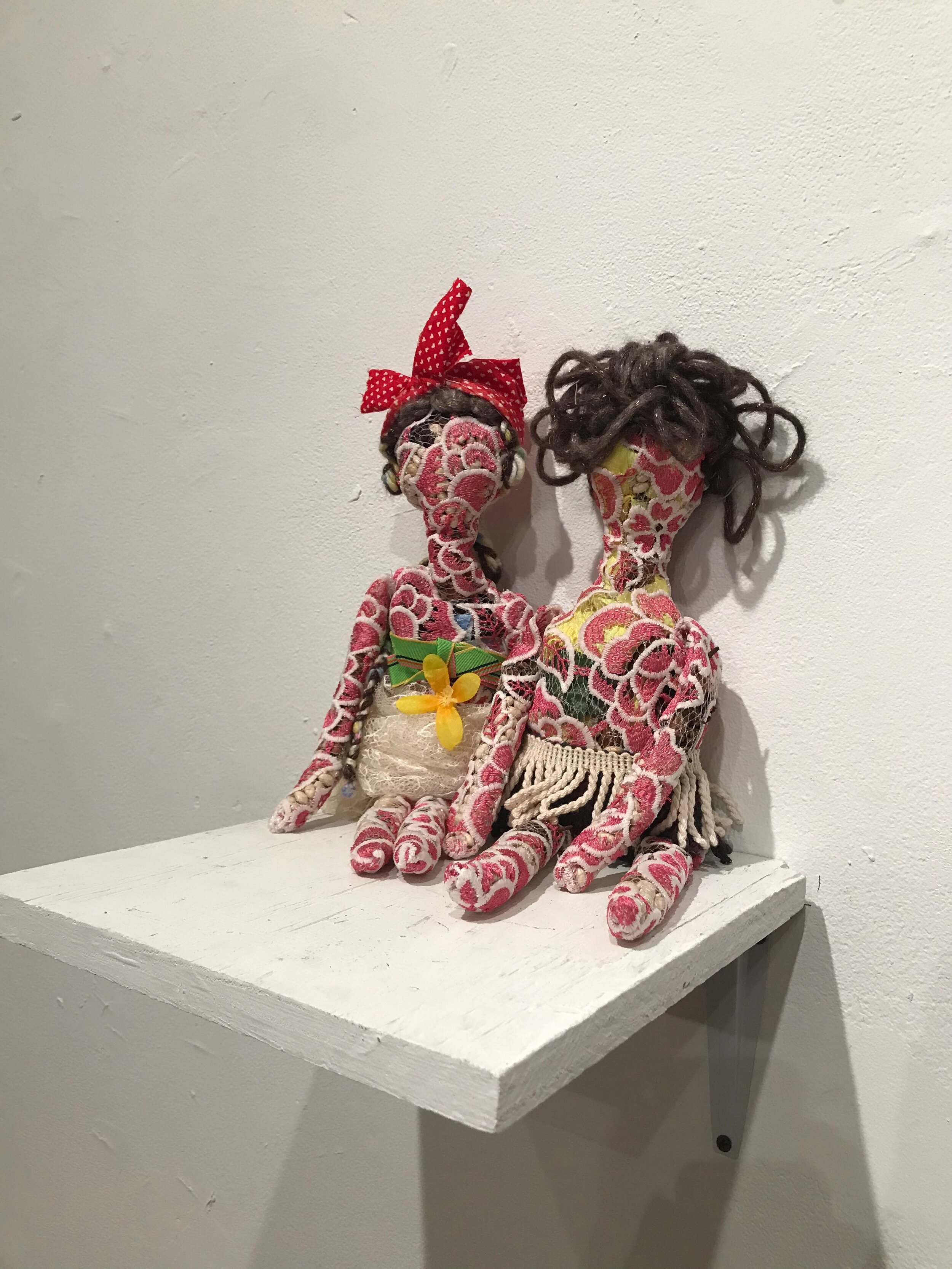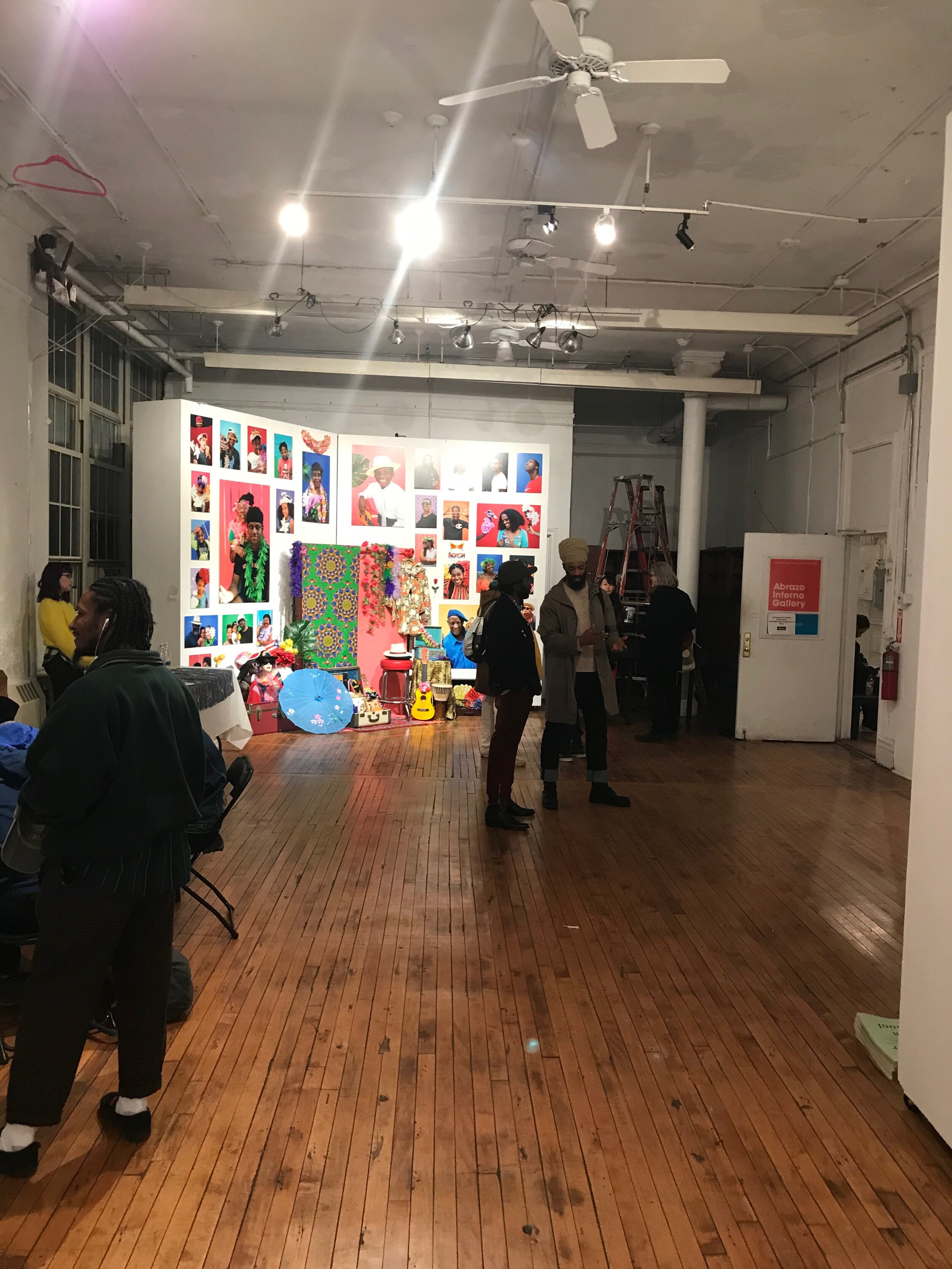RE-TOOLING
RE-TOOLING was a participatory exhibition of artist-created practical tools that encourage social and civic engagement as well as cross-sector problem solving. The show opened on March 11, 2020 at the Abrazo Interno Gallery of the Clemente Center with an opening reception from 7:00-9:00pm featuring performance by Dances for Solidarity. RE-TOOLING was set to run from March 11-April 12, 2020 with select intermittent programming throughout the duration of the exhibition, but, well, events intervened… .
The exhibition featured artists who have participated in the Fellowship for Utopian Practice—an artist-centered laboratory for new methods of imaginative social transformation. In their Fellowship projects these artists used artistic methods to create “practical tools.” A tool—in this context—allows individuals to change their environment (socially, politically, physically) or engage with it in a new way. A tool is reproducible: useful not just in one situation, but in many contexts.
Practical tools for resistance are crucial at this particular historical juncture. In the coming years it will be vital to have a tool belt equipped with ways to find connections between historically linked yet alienated groups (Clarivel Ruiz with Dominicans Love Haitians Movement); methods to use improvisatory practice as a concrete tool for liberation (Sonia Louise Davis with Become Together Freedom School); the ability to share humanity with others in the face of solitary confinement (Sarah Dahnke with Dances for Solidarity); or blueprints for sharing tools for documentation with your neighbors in areas threatened by gentrification (Hidemi Takagi, with The Bed-Stuy Social ‘Photo’ Club).
Artist bios
Born and raised in New York City, Sonia Louise Davis engages improvisation across installation, performance and writing. She has performed at the Whitney Museum of American Art and published in Women & Performance: a journal of feminist theory. Recent fellowships include the New York Community Trust Van Lier Residency at the International Studio & Curatorial Program in Brooklyn and Civitella Ranieri in Umbertide Italy. Currently, she is an LMCC Workspace artist in residence, with visiting artist status at Harvestworks. An honors graduate of Wesleyan University (BA, African American Studies, 2010) and an alumna of the Whitney Independent Study Program (2015-2016), Sonia lives in Harlem.
“Become Together Freedom School” is an experimental platform to cultivate critical improvisation: tactics for self-articulation and collective engagement as we demand a more just society. Freedom, as Angela Davis reminds us, is a constant struggle. Improvisation is not total freedom from any constraints, but is the awareness of outer limits within which to move, and move beyond. Less a formal education program and more a container for collective study, "Become Together Freedom School" is open-ended and speculative, connecting music, movement, struggle, assembly and transcendence. In Spring 2018, Sonia Louise Davis launched the first iteration of the project as part of the group exhibition, “In, Of and Crossing Essex,” curated by Anna Harsanyi at Cuchifritos Gallery + Project Space. Davis led an after-hours movement workshop through Essex Street Market and published a newsprint zine featuring thoughts on improvisation from cross-disciplinary artists in her network. Now as part of “Re-Tooling” curated by Culture Push at the Clemente Soto Velez Center in 2020, Davis makes the project’s methodologies and research visible for visitors to engage with. In addition to the exhibition on view at Clemente’s Abrazo Interno Gallery, Davis will facilitate an off-site discussion group on “Wayward Lives, Beautiful Experiments,” by Saidiya Hartman on Wednesday evenings at Sugar Hill Creamery in Harlem. The Ice Cream Social Series meets weekly at 6:30pm and is a space where neighbors, friends and strangers get together to talk about issues impacting our lives and communities as New Yorkers. The “Wayward Lives” group will meet on March 25, April 1, April 8 and April 15, 2020 at 184 Lenox Avenue. Special thanks to Anna Harsanyi, Mimi Bai, Jennifer Harge, iris yirei hu, mauriah kraker, Mallika Vora, LINCO, Pelenakeke Brown, Clarinda Mac Low, Shawn Escarciga, Petrushka Bazin Larsen and Ivan Forde.
Sarah Dahnke and Dances for Solidarity
Dances for Solidarity began in 2015 as a letter writing campaign and Culture Push Fellowship for Utopian Practice project. Choreographer Sarah Dahnke and several dancer and activist collaborators composed The Dance for Solidarity, a 10-step dance sequence that was sent to over 150 people in solitary confinement throughout the United States with an invitation to perform this dance knowing that at any moment, another person in solitary or in the outside world could be performing the exact same steps at the same time. The project has since expanded to co-create original choreography with several incarcerated collaborators and utilize their movement scores in live performances, aiming to reclaim human dignity through dance while also raising conversations about punishment, fairness, and justice as it relates to the prison system. With nation-wide reach, the project has a sister chapter in Colorado and was awarded a residency/commission through A Studio in the Woods at Tulane University to mount a community-based performance in New Orleans. Dances for Solidarity is a 2019 MAP Fund awardee, which will allow the project to continue building out its work in New Orleans, and DFS was awarded a commission in 2018 from PEN America to create a collaboration between an Oregon-based awardee of their prison writing program, Sterling Cunio, and Texas-based DFS choreographer Dushaan Gillum. In New York, DFS maintains a company of formerly incarcerated performers who bring life to choreography created behind bars.
Dancing Through Darkness is the title of a seven-step movement score created by long-term collaborator Dushaan Gillum, who is incarcerated in solitary confinement in the Texas state prison system. He created the text as a tool for other people in segregation to learn to dance and create original choreography, and it was developed as a live performance in collaboration with a group of formerly incarcerated individuals. The choreography comes with an embedded narrative, using dance as a form of freedom to move from a dark place to a place of light. Ultimately, it is about overcoming obstacles and past hurt, shedding past identities and creating a new future. In this installation of Dancing Through Darkness, the audience is asked to take on the roll of the performer, reading Dushaan's text and embodying it in space with personal interpretations.
After live performances of this work, there is yet another challenge: How do you show someone in solitary confinement what a dance they choreographed looks like? Since there is no way to send video, Dances for Solidarity employs a variety of techniques such as sending still performance video and letters from performers and audience members that describe the experience. Gallery visitors will have the opportunity to participate in this collective letter writing as part of the exhibition.
On opening night, this installation will be accompanied by a live performance of the work by Christina Colón, Hasson "Dizzy" Harris, Benjamin Hake, and Milton Jones.
Clarivel Ruiz (we/us/you) daughter from Ayiti Kiskeya (aka Hispaniola aka the Dominican Republic and Haiti), raised in NYC on the ancestral bones and covered shrines of the Lenape people. In 2016 we initiated Dominicans Love Haitians Movement. Dominicans Love Haitians Movement is an art-based non-profit organization using various art modalities unlearning racism and decolonizing. Our goal is to celebrate our commonalities, honor our differences, unlearn racism, and heal from the traumas of colonization forging a future free from tyranny. We are alumni of Hemispheric Institute’s EmergeNYC, Culture Push’s Utopian Fellow, a Civic Practice Seminar participant at the Metropolitan Museum, The Innovative Cultural Advocacy Fellowship at CCCADI, a 2019 Brooklyn Arts Council award recipient and an MFA graduate of CUNY, City College.
Hidemi Takagi was born in Kyoto, Japan and lives in Brooklyn, NY. Takagi has exhibited both nationally and internationally (London, Madrid, Tel Aviv, Berlin and Paris). Her notable selected exhibitions include The Bronx Museum of the arts, Queens Museum, BRIC Media art center, White columns, The Nathan Cummings Foundation, FiveMyles, and more. Takagi participated in the AIM program at The Bronx Museum of the Arts, NYFA IAP mentoring Program, Lower Manhattan Cultural Council’s Swing Space, Engaging Artist residency by More Art, BRIC New Media Art Fellowship, Utopian Practice Fellowship by Culture Push and En Foco Photography Fellowship. Her work has been reviewed in Time Out Tel Aviv, Time Out New York, NY Times and Village Voice. Her project was selected for & Times Square PublicArts 2011; and she received BAC Grants Brooklyn Arts Fund 2019 for “The Bed Stuy Social ‘Photo’ Club”.
From the artist: “I live in Bedford-Stuyvesant, Brooklyn, historically home to African American and Caribbean communities, many of my neighbors were born and raised in this tight-knit, working-class community. Over the years the area has been under threat from gentrification and real estate development.I have been working on the project “The Bed Stuy Social ‘Photo’ Club” since 2018. Creating a popup outdoors Photo Studio at my front yard. I offered free portraits for members of the community, where they would select props, and add-ons to create something unique. Despite there being an abundance of colorful characters with incredible histories and stories to tell, these are often people who you would pass by on the street and fail to see the spotlight that they are in – I wanted to treat them like superstars. Because they are.”










